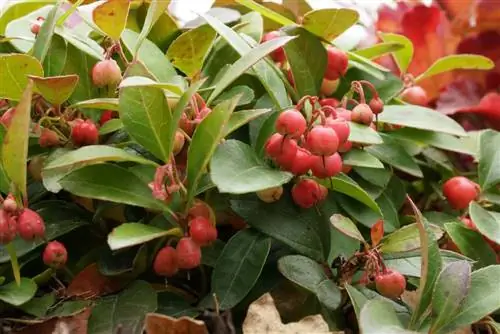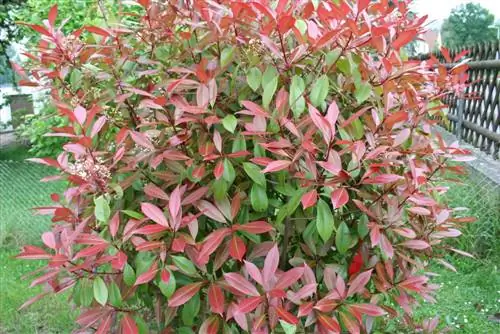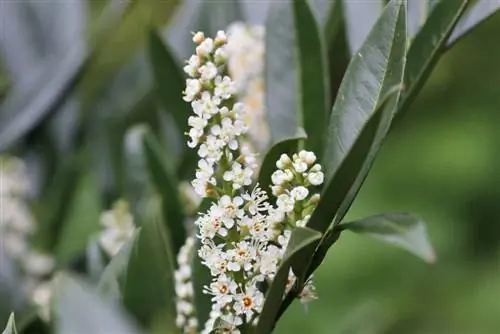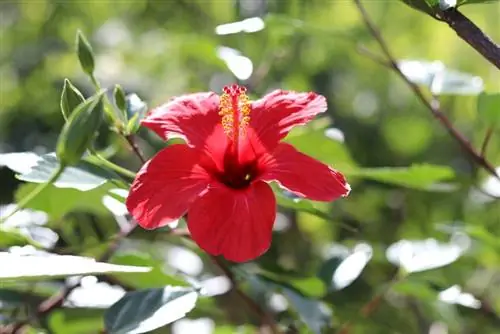- Author admin [email protected].
- Public 2023-12-17 03:39.
- Last modified 2025-01-24 12:45.
The selection of plants that can be kept in pots is very diverse and multifaceted. There are perennial native species as well as those from the tropics and subtropics that are more or less sensitive to cold and frost. Particular attention should therefore be paid to overwintering in a species-appropriate manner, because hardly any potted plant can survive without frost protection. While sensitive potted plants need to overwinter frost-free, appropriate cover is often sufficient for hardy ones. In some cases, the trunk and crown also require separate winter protection.
Overwintering hardy potted plants
Even if these plants can tolerate temperatures below zero without any problems, they should be protected from all eventualities and winterized with suitable protective measures. In pots or buckets they are unprotected from frosty temperatures due to the limited root space. Without frost protection, the bale freezes very quickly. If it thaws relatively quickly on mild winter days, the roots begin to rot. That's why it's essential to protect supposedly winter-hardy potted plants from winter cold, icy winds and, in some cases, winter sun. Depending on the winter hardiness, these measures include protecting the root area, for example by covering it, and/or the entire plant, including the above-ground plant parts.
Winterize roots
Winter protection actually begins with planting or choosing the right planter. This should have as large a capacity as possible, sufficient drainage holes and a drainage layer on the bottom of the pot. The root is in most cases the most sensitive part of the plant, especially in container plants. Winter protection is recommended not only for freshly potted young plants, but also for older specimens.
- Winterize plants before the first severe frosts
- Remove wilted flowers and leaves before covering
- Otherwise there is a risk of rot and pest infestation
- Then apply frost protection
- To do this, wrap the bucket twice with insulating materials
- Fleeces, bubble wrap, bubble wrap, jute, reed and coconut mats are suitable
- To protect the insulation, wrap it additionally in a willow or bark mat
- Tie the whole thing down with jute ribbon
- Different colored jute ribbon ensures an attractive look for the winter outfit
Depending on your sensitivity to frost, you can also cover the root area with straw or pine twigs. Protecting the bale from the cold ground is no less important. To avoid direct contact with the ground, place the bucket on an insulating Styrofoam plate, coconut mat or a wooden pallet. If available, potted plants can also be placed on sturdy plant rollers, which makes transporting them much easier. If possible, place the well-packaged bucket close to a house wall where it is less exposed to the weather.
Tip:
If possible, you should not overdo it when covering the root area, because despite winter protection, sufficient air must be able to reach the soil at all times in order to avoid rot and mold formation. There must also be the possibility of watering.
Winter protection for trunk and crown
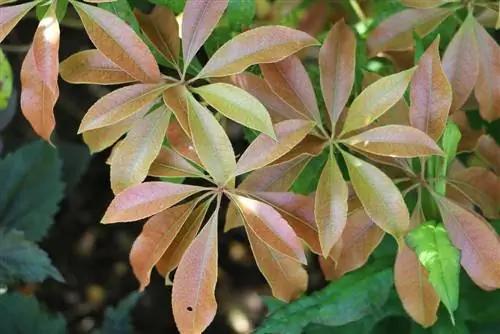
For smaller trees or shrubs in a pot, the crown and trunk may also need to be protected from severe frost, cold winds and winter sun. This is especially important for evergreen plants because the leaves constantly evaporate water in the sun. If the ground is iced over at the same time, they can no longer absorb water and, in the worst case, they dry out. In spring it often appears that plants have frozen, but they have dried up.
- Be sure to shade evergreen plants
- This keeps evaporation as low as possible
- Short-term, strong temperature fluctuations pose the risk of stress cracks in the bark
- This mainly affects leafless plants
- Bark cracks can be a gateway for pathogens in spring
- To counteract this, carefully tie the shoots together with raffia or something similar
- Then put a jute bag or a fleece hood over it
- Tie the sack or hood at the bottom or, for tall stems, on the trunk
- Do not tie too tightly to avoid damage to the plant
- Use jute fabric or winter protection fleece for larger plants
You can use burlap or reed mats to make trunks winter-proof by wrapping them with it or protecting them with pine branches. What you should definitely not use is foil, the plants would sweat underneath, which in turn would result in rot.
Tip:
When protecting the above-ground parts of the plant, it should be taken into account that evergreen plants always need sufficient light, even in winter.
Caring for hardy potted plants
In addition to the right protection, care should not be left behind in winter. But this only applies to occasional watering. Depending on the location and weather, it is usually sufficient to water moderately every 2 - 3 weeks and only in frost-free weather. It is best to water when the daytime temperatures are highest. If possible, leaves should not be wetted with water, as they will only dry slowly and could easily freeze. There is no fertilization at all during the winter.
Preparing frost-sensitive plants for winter
In addition to winter-hardy ones, there are also potted plants that are sensitive to frost and therefore have to overwinter frost-free. However, you should not move to winter quarters too early, because a few cold days make it easier for the plants to transition into the rest phase. Furthermore, it toughens them up. Be careful with exotic plants such as citrus or oleander. Depending on the weather, they should be cleared away in October.
Before putting things away, remove any wilted flowers and leaves. In contrast to plants that overwinter outside, these can now be cut back by a third or half, depending on the species. After they have finally been checked for pest infestation, they can be transported to winter quarters. The requirements for overwintering can be as different as the individual plant species, which should definitely be taken into account.
Suitable premises
Bright and frost-free or unheated winter gardens, garages, basements or stairwells are well suited for overwintering. Basically, the cooler the room temperature, the darker the winter quarters can be. Evergreen plants such as oleander or citrus plants need a lot of light even in winter, while leafless plants such as fuchsia or angel's trumpet can also be completely dark.
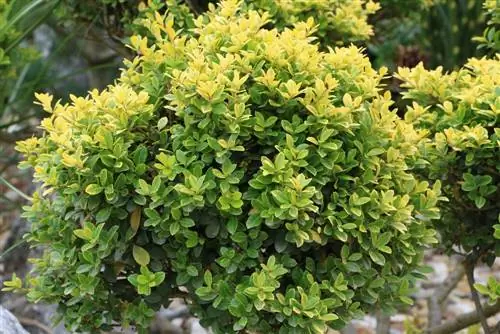
The wintering room should under no circumstances be too warm, as this would result in the formation of so-called horny shoots. This refers to long, thin, weak shoots that are of no use and cost the plant unnecessary energy. Such shoots have to be removed again and again. For most plants, temperatures between five and ten degrees are optimal during overwintering. They should not be too close so that optimal ventilation is guaranteed at all times.
Tip:
If the conditions in the winter quarters are not ideal, heavy pruning in the fall should be avoided in order not to stimulate budding. Cutting measures are then better postponed until spring.
Care in winter quarters
Plants that overwinter indoors should also be watered sparingly and not fertilized. The substrate or bale must not dry out completely at any time. It is usually sufficient to water sparingly once a week. Before each watering, let the substrate dry thoroughly.
Regular ventilation is also essential. If an evergreen plant loses its leaves, the reason is usually not a lack of water, but rather a lack of light or temperatures in the winter quarters that are too high. Falling leaves should be removed regularly.
Conclusion
Terrace and balcony are synonymous with an open-air living room for many people. Even without a garden, you can create a green oasis here in no time. As huge as the selection of suitable plants is, the design options are just as diverse. If they are then properly overwintered, they can unfold their full splendor year after year and attract astonished looks.

